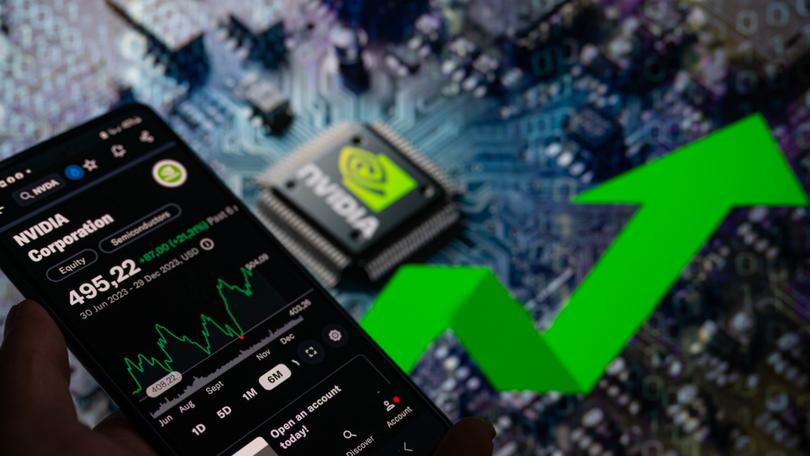THE ECONOMIST: A golden age for stockmarkets is drawing to a close

Stock markets tend to rise gradually but recently they have soared.
American stocks are up by 21 per cent since the end of October and stand roughly 5 per cent above their vertiginous peak in January 2022.
On February 22 Europe’s equities set a new record for the first time in two years. India has been enjoying a multi-year boom as optimism about its economy abounds.
Sign up to The Nightly's newsletters.
Get the first look at the digital newspaper, curated daily stories and breaking headlines delivered to your inbox.
By continuing you agree to our Terms and Privacy Policy.Even Japanese stocks — a byword for stagnation — have at last exceeded the level they reached in 1989 before a decades-long slump. It has been an extraordinary run. Since 2010, the S&P 500 index of American stocks has returned 11 per cent a year in real terms.
These profits are all the more striking given what markets have had to contend with. The age of free money has been followed by two years of interest-rate rises — and even now bond investors are betting against imminent cuts. A trade war is raging between America and China; actual wars are raging in Ukraine, the Middle East and parts of Africa.
Around the world, governments are turning away from free markets and globalisation in favour of industrial policy and protectionism. If that has not extinguished this rally, what will?
One conclusion might be that a bubble is waiting to pop, especially in United States. On Wall Street, valuations — the multiple by which profits are scaled up—are on average 80 per cent as high as they were during the dotcom mania of the late-1990s and 90 per cent as high as they climbed during 2021, before rock-bottom interest rates rose.
Similar extremes are also to be seen in other measures, including concentration (the share of the stock market that is made up by the top firms) or value spreads (the valuation of the most expensive companies compared with the cheapest).
The value of the top 10 per cent of US firms as a proportion of the whole market has not been as high since the crash that was one cause of the Depression in the 1930s. And don’t forget the frothiest corner of the financial markets: bitcoin is trading around $60,000 again, just shy of its 2021 peak.
Yet there are also reasons to see markets’ exuberance as rational. As central banks all over the world tightened monetary policy at a pace not seen for a generation, many analysts warned about the danger of recessions and falling corporate profits.
At the start of 2023 Wall Street savants predicted that in the year to come America’s economy would grow by just 0.7 per cent. It achieved more than three times that amount.
A broad range of firms are publishing strong results, including retailers, such as Walmart, and Japanese car makers, such as Toyota.
The economy continues to defy gravity. A popular regular forecast of annualised American economic growth, published by the Federal Reserve Bank of Atlanta, stands at 3.2 per cent for the first quarter of this year. Despite a slowdown in China—whose sagging markets are an exception to the global trend—the IMF has been nudging up its global growth forecasts, too.
Adding to investors’ bullishness is their optimism about artificial intelligenc. This is not a ChatGPT-like hallucination. The event that propelled stocks into the stratosphere was the publication on February 22 of earnings by NVIDIA, which has an iron grip on the market for chips that are critical for training AI models.
In October 2022, just before OpenAI released its now-celebrated chatbot, NVIDIA earned around $US3b in gross profits each quarter, mostly from selling graphics cards to gamers. In the three months to the end of January 2024 NVIDIA earned $17b in gross profits while enjoying a margin of 76 per cent.
The company’s share price has climbed five-fold over that time, but its earnings have grown even faster. In other words the enthusiasm that has lifted NVIDIA close to a stock market value of $2tn is not built on dotcom-like hype, but cold, hard profit.
Judging the boom to be justified, though, does not make it wise to rush out and buy stocks. What happens next is unlikely to fill investors with glee. That is partly because the extreme excitement about AI extends beyond NVIDIA to other members of the “Magnificent 7” group of tech stocks, such as Microsoft, whose eventual commercial strategies in the AI era are still far from clear. These firms are hoarding NVIDIA’s chips in the belief , one way or another, their AI businesses will boom.
It remains to be seen how they will resolve basic issues with their large language models. Plenty of startups want to eat the Big 7’s lunch, and competition will keep profits in check — even, eventually, at NVIDIA.
Techno-optimism is also the basis for bullishness about economy-wide productivity growth.
The lesson from other fundamental technologies is that it takes time to work out how to exploit them.
Businesses talk non-stop about generative AI but it remains at the experimental stage. As a result, even if AI is destined to transform societies, today’s investors may struggle to pick which companies will make money. Believers in the dotcom boom were not wrong about the internet’s transformative power —but they still lost their shirts.
If things stay sane this time, valuations will not climb much further. The trend of rising profits, as a share of the economy, also looks spent. Their outsize growth in recent decades was a one-off, caused by the falling cost of borrowing and taxes. As inflation lingers and government finances remain stretched, that fall cannot be repeated; it may even be reversed.
Under realistic assumptions about what will happen to valuations, interest and taxes, to generate even modest real equity returns of 4 per cent a year over the next decade, America’s firms would need to increase their underlying profits by around 6 per cent a year, close to their best ever post-war performance.
No wonder Warren Buffett, a veteran investor, sees “no possibility” of super returns for his fund.
Equities could underwhelm in many ways. Perhaps AI-exhilaration will cause a dotcom-style bubble that pops.
Another war or crisis could lead to a crash. Or prices may stagnate in a gentle bear market that takes years to reverse.
Whatever the path to disappointment, in 10 years’ time nobody will be repeating the obvious conclusion of today: that investors in equities— especially American ones — have enjoyed a golden age.

